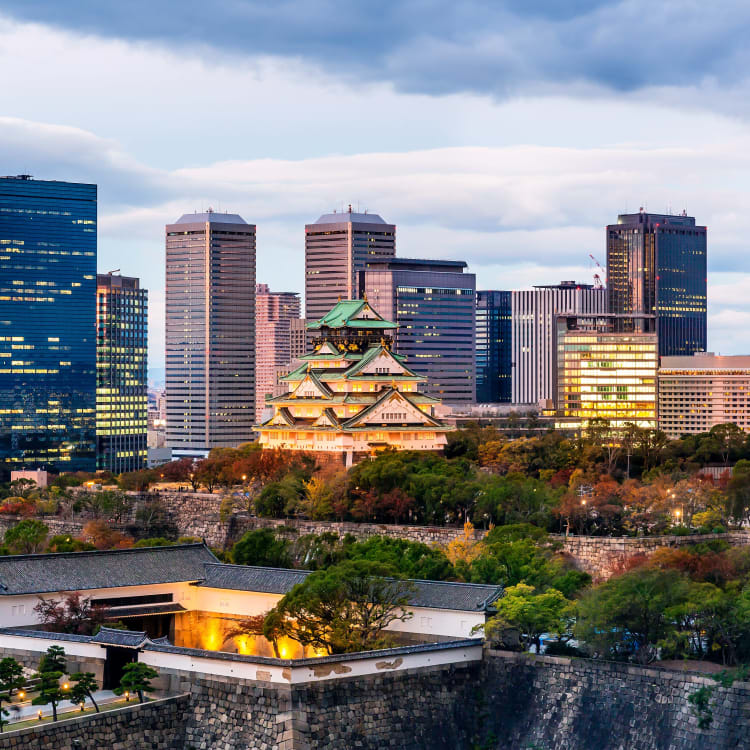
GUIDE Ultimate must-see guide to Osaka
Food, fun and nightlife meet history and culture in Osaka
Osaka is a vibrant and dynamic city with something to offer every traveller – from foodies and families to those who like to stroll traditional shrines and temples to art lovers and those who love to shop until they drop. No matter how many times you visit, you’ll discover something new and leave with fond memories that will keep you coming back for more.
Location
Osaka is located in the Kansai region, the centre of the Honshu, the largest of the four main islands of Japan.
Cuisine
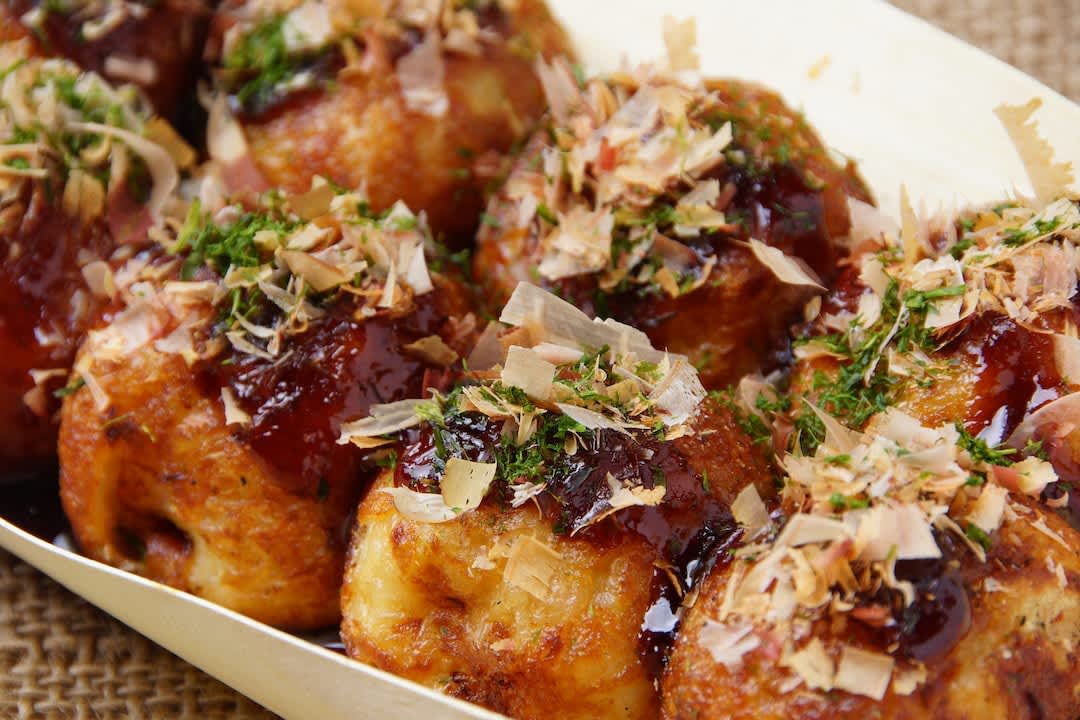
Takoyaki, a savoury snack sometimes referred to as ‘octopus balls’ in English. Image: fumi901/Shutterstock.com
There’s nothing quite like the food in Osaka. Known as ‘the nation’s kitchen’, you’ll find everything from hearty street food and authentic family-owned restaurants to Michelin-star fine dining. Whatever your tastes, you are sure to leave Osaka with a full belly and delicious memories.
As far as street food goes, you can’t go past the Dotonbori district. Along the river, you will find endless stalls serving takoyaki (spherical savoury dumplings filled with cooked octopus pieces and topped with savoury sauce, mayonnaise, dried seaweed and bonito flakes), ramen and okonomiyaki (savoury pancake made with chopped cabbage, flour and egg with toppings) to name a few. The streets and alleys also have plenty of options for dining in at izakaya (casual Japanese-style pubs), bars and restaurants. Try a crab restaurant which this district is famous for. Or perhaps the Osaka-style sushi called hakozushi (boxed sushi) where they are pressed in a square wooden mould!
For a more traditional market experience head to Kuromon Market in the Namba district and wander some 170 stalls specialising in fish, meat and produce. Or if you’re wanting to dine where the locals do, a visit to Tenma is a must.
Neon nightlife
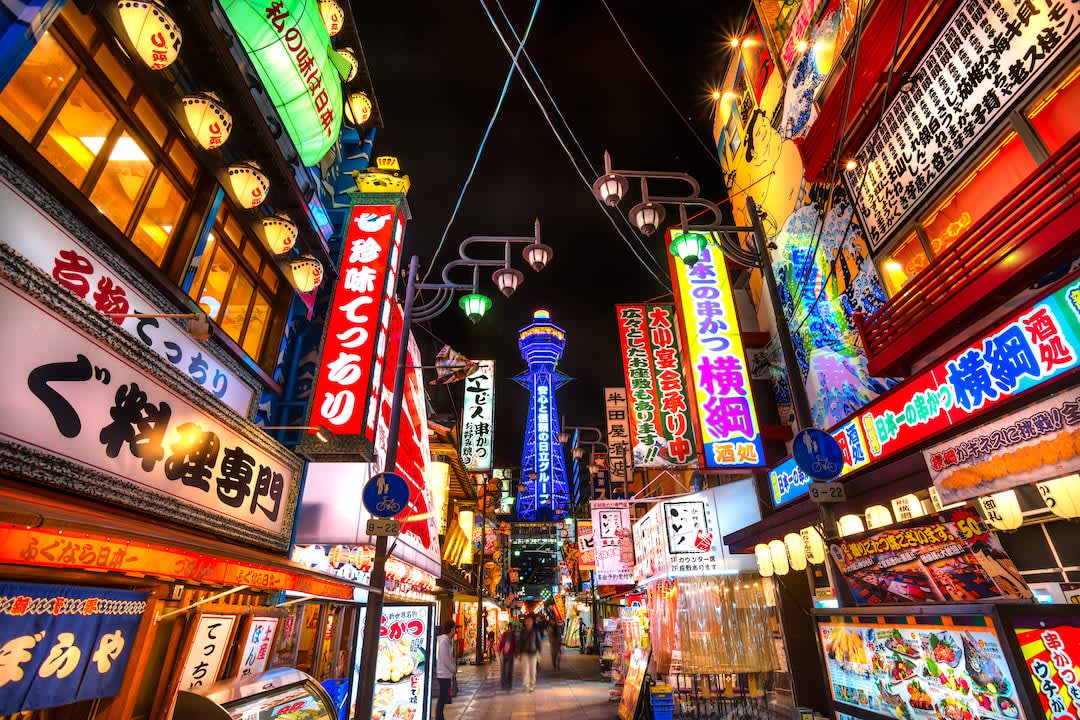
Tsutenkaku Tower lit up at night* in the Shinsekai (new world) district at night. Image: Luciano Mortula - LGM/Shutterstock.com
Dotonbori is not only known for its amazing street food, but it is also the location of bright lights and buzzing nightlife. This restaurant and bar district certainly comes to life after dark. Stroll along the strip and take in the colourful lights and signs of the lining buildings. The evening is perfectly paired with a cold Japanese beer and a hot snack from a street vendor. Don’t forget to take a snap with the giant neon Glico man!
Take a stroll and be wowed by bright lights and colours at Shinsekai, also known as the ‘New World’ district. Designed as an entertainment district in the early 20th century, the district is not your typical Japanese neighbourhood with Western cultural influences in its architecture and design. The northern half of Shinsekai was inspired by Paris while the southern portion is inspired by New York City’s, Coney Island.
It will also be hard to miss the famous Tsutenkaku Tower which is a popular attraction in Shinsekai. Built in 1912 and inspired by Paris’ Eiffel Tower, the tower stands at an incredible 103 metres high with the main observatory deck at 91 metres, so get ready for some amazing views of the vibrant Shinsekai district!
*Note: The LED lights on Tsutenkaku Tower are under renovation until September 2023.
Seasonal festivals and events
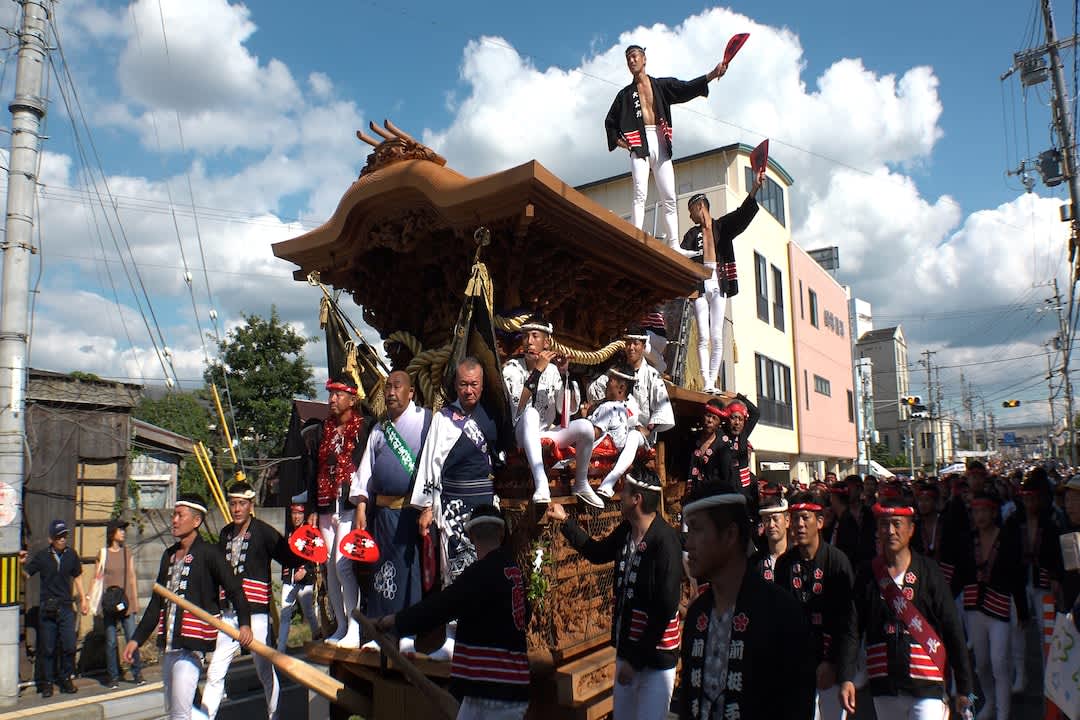
Kishiwada Danjiri Matsuri. Image: StreetVJ/Shutterstock.com
Japan is well known for its vibrant festivals and events and Osaka is no exception. Shogatsu (New Year) is a fantastic time to visit if you’re looking to celebrate and discover matsuri (festival) traditions.
Many shrines hold New Year's events including Sumiyoshi Taisha Shrine. On 1st January, multitudes of people visit for hatsumode – the customary first shrine visit of the year. And if you think the celebrations are over at the conclusion of the first day of the year, think again. Toka Ebisu Festival is held one week after New Year from January 9 to January 11 at Imamiya Ebisu Shrine. Enjoy the festive parade, street food and lucky charms!
For a summer parade with all the trimmings, the Kishiwada Danjiri Festival features hundreds of men and ornately decorated traditional wooden floats called danjiri. Other summer festivals include Tenjin Matsuri and Naniwa Yodogawa Fireworks Festival.
If you’re looking for something more modern, plan your visit around Summer Sonic or the Osaka Festival of Lights held in winter.
Natural wonders
Beautiful waterfall in autumn in Minoo Park, Osaka. Image: anek.soowannaphoom/Shutterstock.com
Pack a picnic and take a stroll through the magical cherry blossoms (sakura) in spring. Some of the best places in Osaka to view sakura include Expo ’70 Commemorative Park, Kema Sakuranomiya Park, Osaka Castle Park and Kishiwada Castle.
But it’s not just spring that provides spectacular natural phenomena, autumn is an amazing time to see the trees ablaze with colours of crimson, orange and gold. You can experience koyo (autumn leaves) in a number of places around Osaka. Walk down Midosuji Street to see the yellow ginkgo trees or explore the grounds of Katsuoji Temple to admire the fiery red of the Japanese maples. If you’re up for a hike, take the main trail in Minoo Park and admire the autumn foliage before arriving at the majestic waterfall. Or head to Mt Inunaki and visit the hot spring resort located at the foot of the mountain, Shipporyuji Temple or its many hiking trails to marvel at the autumn colours.
Tradition and heritage
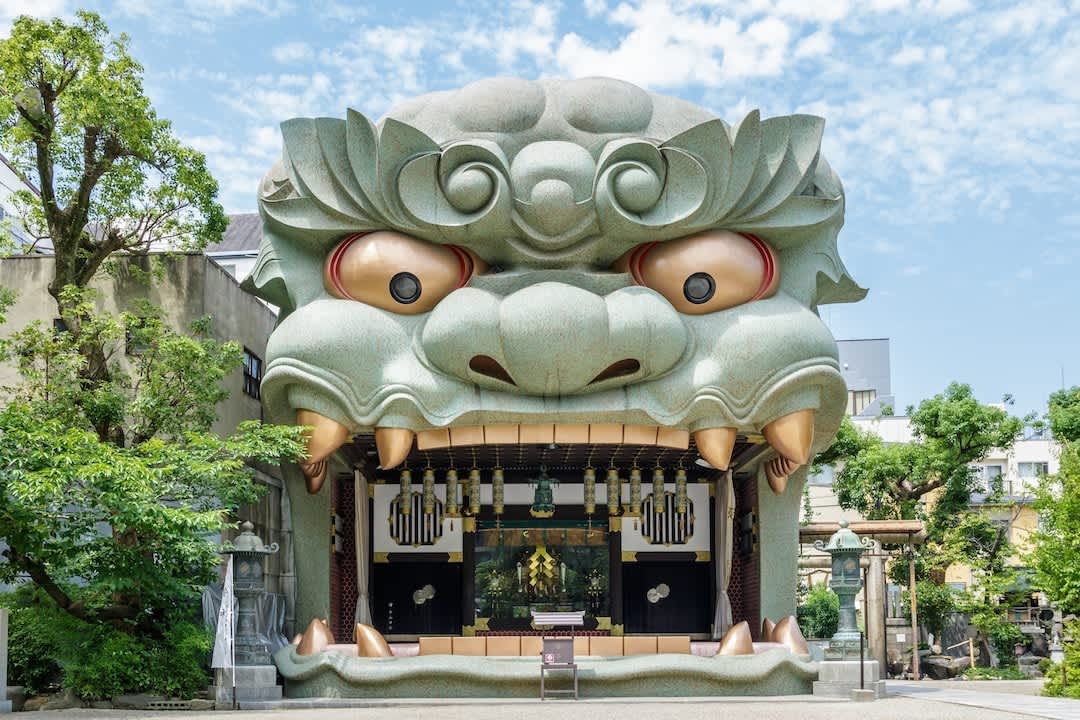
Shishiden (Lion hall) of Namba Yasaka Jinja Shrine. Image: Jasonyan/Shutterstock.com
With over 1,400 years of history, Osaka has countless locations where the tradition and culture of Japan can be experienced. One of the main attractions is Osaka Castle. Set amongst the modern backdrop of the city and surrounded by parkland, it is an iconic sight to behold. Other significant sites include Shitennoji Temple, Namba Yasaka Shrine and Hozenji Temple. After your visit to Hozenji Temple, be sure to grab a bite to eat along the street of Hozenji Yokocho and step back in time to the Osaka of old.
Art and culture lovers
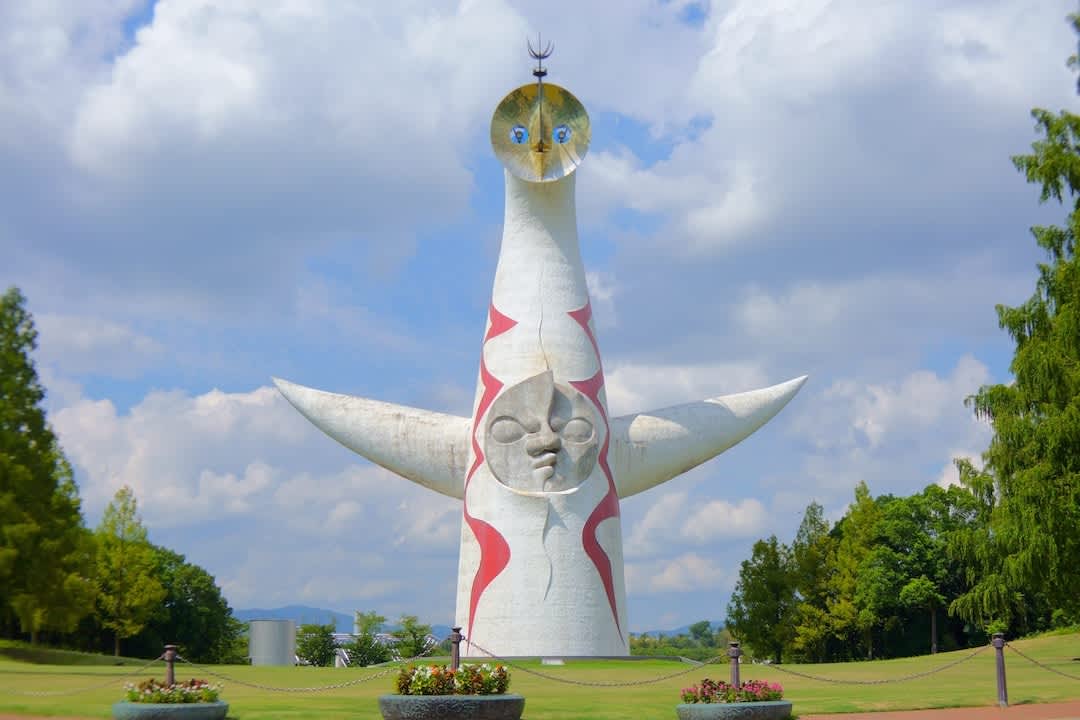
The Tower of the Sun at the Expo ’70 Commemorative Park. Image: tbbstudio/Shutterstock.com
Osaka is a wonderful mixture of old and new, creating a vibrant and interesting culture. The expression of this can be seen in the many modalities of art displayed across the city.
With over 8,000 pieces of contemporary art, The National Museum of Art, Osaka, is a good place to start. Or perhaps the newly opened Nakanoshima Museum of Art on the island of Nakanoshima. Then go back in history at the Osaka Museum of Housing and Living. Admire the re-created buildings and streets and feel what living in Osaka was once like.
Wander Midosuji Sculpture Street for your public art fix and for theatre lovers there is the National Bunraku Theatre*. For something completely different, visit the Cupnoodles Museum and learn all about instant ramen noodles! Don’t forget to drop by My CUPNOODLES Factory on the first floor to create your one-of-a-kind cup noodles package where you get to design the cup and choose your favourite soup base and toppings.
*English translations are available for some performances. It is recommended to contact the theatre directly to confirm.
Experiences

Umeda Sky Building at night. Image: GagliardiPhotography/Shutterstock.com
There’s an abundance of things to do and see in Osaka no matter your interests. Why not try a samurai or ninja experience? Dress up in armour and learn about the samurai sword or discover how to move like a ninja and throw ninja stars at Japan Tate-do Association in the heart of Osaka City! If you fancy getting a little creative, you can make your own woodblock print at the Kamigata Ukiyoe Museum in Namba. Or relax on a Naniwa cruise with a rakugo (traditional comic storytelling) storyteller. Float along the canals and enjoy a comedic performance as well as gain local insights into the dazzling city of Osaka.
An architectural icon of Osaka has to be the Umeda Sky Building, which consists of 2 modern tower buildings connected by the circular Floating Garden Observatory (Kuchu Teien) at the top. Head up to the observatory to enjoy 360° views of Osaka’s cityscape, then make your way down to the basement floor and explore the retro restaurant alley encapsulating Showa Period (early 20th century).
After all that excitement it’s time to wind down with a Japanese beer. Visit the Asahi Beer Museum in Suita City and learn about the brewing process before sitting down to a tasting of their refreshing beer.
Neighbourhoods
Namba, Dotonbori and Shinsaibashi
Think shopping, eateries and entertainment. The popular Dotonbori street and canal dissect the two neighbourhoods of Namba and Shinsaibashi. Shinsaibashi offers some great shopping opportunities such as the eight blocks of Shinsaibashi-suji Shopping Street, and the street fashion and vintage hub of Amerikamura. For budding and professional chefs, a visit to Sennichimae Doguyasuji Shopping Street in Namba will fill up your cooking cup. A 150-metre long street lined with stores selling every type of cooking utensil and kitchen item you could dream of.
Nipponbashi
Den Den Town in Nipponbashi is perfect for hobbyists who are interested in Japanese anime and manga. Pop culture stores sell collectible figurines and other interesting merchandise. It’s also a great place to shop for electronics and appliances. If you’re in the market for vintage video games and consoles, this could also be the perfect hunting ground. Once you’ve shopped up a storm, stop in at one of the restaurants or cafes, some of which are anime themed.
Horie (Minamihorie and Kitahorie)
The Horie River runs between Kitahorie and Minamihorie. Horie is a fashionable neighbourhood and a visit here should include a walk down Orange Street. Featuring boutiques, craft ateliers, furniture stores, bars and trendy cafes.
A mixture of the historical and the modern, the main attraction of this neighbourhood is of course, Osaka Castle. Pack a picnic and wander the beautiful grounds of Osaka Castle Park and visit the nearby Osaka Museum of History.
Umeda
Conveniently located near JR Osaka Station, Umeda is a popular commercial neighbourhood full of tourists, business people and shoppers. One of the most iconic attractions is the Umeda Sky building. From here you can enjoy panoramic views of the city. Head to Grand Front Osaka for shopping, Tsuyuten Shrine for a traditional experience or the SUPER DRY Umeda beer hall for food and drink.
Tennoji and Shinsekai are urban centres full of alleyways that reflect an Osaka of the past. While in Tennoji, visit Tennoji Park, Shitennoji Temple and the current tallest skyscraper in Japan, Abeno Harukas. You’ll know you're in Shinsekai when you glimpse the iconic Tsutenkaku Tower. Tachinomi (standing bars) are also a common feature of the Tennoji and Shinsekai areas. A great place to stop and enjoy a beverage with the locals.
Nakanoshima is a fantastic neighbourhood for contemporary art and culture lovers. It is actually an island and the centre for commerce and government in Osaka. It is also home to many great hotels, museums and restaurants.
Osaka Bay
The Osaka Bay Area offers attractions that are family-friendly or for those big kids at heart. It is here that you’ll find Universal Studios Japan and Osaka Aquarium Kaiyukan. Visit the Tempozan promenade for shopping, ride the giant Ferris wheel and dine at the restaurants. And of course, one of the best ways to see the bay is to hop on a cruise.
Sakai and Kishiwada cities are located within 1 hour southeast of Osaka City on the way to Kansai International Airport. Sakai is known for its Sakai knives which are highly sought after by chefs. Visit the Sakai Traditional Crafts Museum to learn about the traditional crafts of Sakai, including knife making. It is also home to a number of giant ancient tombs (kofun) that form part of the Mozu-Furuichi Kofun UNESCO World Heritage site. The Tomb of Emperor Nintoku (Daisen Kofun) is the largest in Japan, measuring 486m long and 33.9m high. Visit the historical Kishiwada Castle and if visiting around mid-September, consider a visit to the lively Kishiwada Danjiri Matsuri festival.
Accommodation
Accommodation in Osaka is available to suit all budgets and comfort levels, offering everything from western-style to traditional Japanese stays for you to enjoy.
Experience a shukubo (traditional temple stay) and get a glimpse of daily temple life including vegetarian meals, prayers and meditation - expect nothing less than a peaceful and tranquil visit. Or you can witness first-hand Japan’s famed omotenashi (hospitality) at a ryokan (traditional Japanese inns). Dating back to the 8th century, you can expect to see traditional tatami flooring, futon beddings, private baths and delicious in-house kaiseki (multi-course meal).
For a modern stay, Osaka offers plenty of western style hotels with settings and amenities familiar to travellers from Australia and New Zealand. Generally, you will find western-style beds, a small writing desk, a refrigerator, a kettle and an ensuite bathroom.
Other factors to consider when choosing accommodation are access to transport and distance to shops, restaurants and attractions. Popular locations include Namba, Umeda, Honmachi (Central Osaka) and Shin-Osaka areas.
How to get around
Osaka is a 2.5-hour shinkansen ride from Tokyo, or you can also fly to Kansai International Airport (KIX). Travel around the city via the subway, the JR Osaka Loop Line (circling the central districts) and private railway lines. There are also a number of economical train passes and tickets available for exploring Osaka and the Kansai region.
You can also explore Osaka via water bus or a cruise. Sightseeing taxis are available as well. Osaka is bicycle friendly with English-speaking bike rental services available.





























































